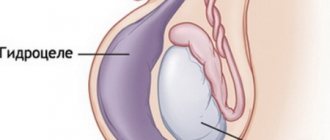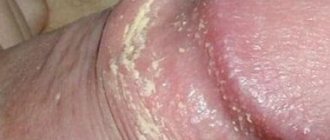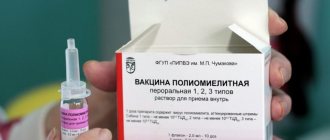- Gallery
- Reviews
- Articles
- Licenses
- Vacancies
- Insurance partners
- Partners
- Controlling organizations
- Schedule for receiving citizens for personal requests
- Online consultation with a doctor
- Documentation
Varicocele is a varicose vein of the pampiniform plexus of the spermatic cord. Most often, varicocele develops in the veins of the left testicle.
One of the main causes of varicocele is the anatomical feature of the testicular vein: the right testicular vein flows into the inferior vena cava, while the left testicular vein flows into the renal vein at a right angle. The pressure in the left renal vein is higher than in the inferior vena cava. In addition, some children experience moderate compression of the left renal vein or testicular vein in the so-called aorto-mesenteric “tweezers,” which leads to increased pressure and obstruction of outflow from the left testicle. In a horizontal position, the aortomesenteric “tweezers” open, the pressure in the renal vein drops and blood begins to flow unhindered.
An aggravating factor is varicose veins in the child’s parents, because the structural features of the veins (valvular apparatus, the “structure” of the vein wall) are inherited, as are facial features. Valves in the veins prevent the reverse flow of blood, and if insufficient, it leads to stagnation of venous blood in the veins of the pampiniform plexus.
The physiologically greater length of the left testicular vein compared to the right, and therefore high hydrostatic pressure, also contributes to the development of varicocele on the left. There are other ways of outflow of venous blood from the testicle, but they have little role in the occurrence of varicocele.
Varicocele is a common disease among men of all age groups, but most often occurs in adolescents during puberty (12-15 years), since significant growth is observed during puberty, which causes an increase in orthostatic pressure in the pampiniform plexus. During this period, there is a significant increase in the size of the testicles and the flow of arterial blood increases by 4-5 times. Aggravating factors are chronic constipation, as well as excessive prolonged tension of the abdominal wall muscles, accompanied by an increase in intra-abdominal pressure and difficulty in the outflow of blood into the inferior vena cava.
Due to a violation of the venous outflow, congestion, hypoxia and disruption of the spermatogenic and endocrine functions of the testicle occur.
Diagnostics
Varicocele usually develops in adolescence during the process of rapid growth (by the age of 10, varicocele is diagnosed in 6% of boys, from 13 to 17 years old - in 10-16%) or after a significant increase in physical activity. In most cases, varicocele is asymptomatic, therefore it is more often diagnosed during routine examinations by a pediatric urologist-andrologist. Sometimes teenage boys, having discovered an enlargement of the left half of the scrotum or “blueness” above the testicle, do not attach much importance to this, or, on the contrary, they worry and are embarrassed to tell their parents about it. With a high degree of varicocele, children may be bothered by nagging pain in the scrotum area, which may be a reason to contact a pediatric urologist.
To confirm the diagnosis and determine the type of varicocele, an ultrasound examination of the testicles and Dopplerography (duplex examination) of the vessels of the scrotum should be performed, which allows assessing hemodynamics, the structure of the testicles, recording a decrease in the volume of the gonads, identifying the return flow of blood through the internal spermatic vein and other signs of the disease. The task of diagnostic studies is to determine the form and degree of development of varicocele, on which the choice of treatment method depends.
If indicated, special laboratory tests are performed to assess testicular function.
Complications of varicocele
An alarming fact is that in 30% of men suffering from infertility, varicose veins of the spermatic cord are not diagnosed in time.
According to various authors, 20–80% of adolescents with varicocele have impaired spermatogenesis. In the development of infertility with varicocele, factors such as increased testicular temperature and venous stagnation play a leading role. In this case, the blood-testis barrier may be disrupted and autoimmune aggression occurs - the formation of antisperm antibodies, which further damage the testicle.
Varicocele often leads to impaired sperm motility, decreased testicular function, and is accompanied by a high incidence of infertility or early “male menopause.” It is believed that about 50% of cases of male infertility are caused by the presence of varicocele (35% of primary infertility and more than 80% of secondary).
Diagnostic methods
To diagnose cryptorchidism in young children, parents should contact a pediatric urologist.
- The doctor palpates and examines the scrotum.
- If a pathology is suspected, an ultrasound of the abdominal cavity (can be supplemented with radiography) or the groin area or scrotum is performed.
- To further confirm the diagnosis, an MRI with contrast is prescribed.
- If the case is complex, it is necessary to use an invasive method - laparoscopy.
It happens that both testicles cannot be identified by palpation or other examinations. In this case, we may be talking about pseudohermaphroditism. To exclude or confirm this pathology, hormonal and genetic tests are performed. Source: I. Klepikov, H. Nagar, B. Krutman Cryptorchidism and problems of its diagnosis and treatment // Pediatric surgery, 2006, No. 2, pp. 26-32
Treatment of varicocele in boys
Varicocele in most cases does not require immediate treatment. First, it is necessary to conduct diagnostic studies.
Conservative treatment is carried out for varicocele in the initial stage of the disease, its effectiveness is not higher than 30% of cases.
Treatment of varicocele is carried out taking into account the degree of dilation of the veins of the spermatic cord. In cases where varicocele progresses, with a bilateral pathological process, when a decrease in testicular volume is detected on one or both sides, unilateral varicocele of grade III and grade II, and in case of violation of certain indicators according to ultrasound data, surgical treatment is indicated.
Surgery for varicocele does not belong to the category of severe surgical interventions, and the child can be discharged from the hospital within 6-24 hours after the operation. Home regimen for 7-10 days, it is recommended to refrain from physical activity for 1 month. Surgery for varicocele involves “switching off” the pathologically altered internal spermatic vein and its branches from the bloodstream. There are several methods and methods of surgical treatment: ligation and sclerosis of the veins, while the spermatic artery and lymphatic vessels remain intact.
Timely diagnosed varicocele and performed surgery restores testicular function, preventing the development of irreversible consequences of the disease, such as decreased potency and infertility. During puberty, adolescents need an annual examination by a pediatric urologist-andrologist, and if the child complains to parents about discomfort, pain, changes in the size or configuration of the scrotum, they should urgently consult a doctor for an examination.
Make an appointment with a pediatric urologist-andrologist by phone
Services and prices
Primary appointment (examination, consultation) with a pediatric urologist-andrologist
1,800 rub.
Repeated appointment (examination, consultation) with a pediatric urologist-andrologist
1,700 rub.
Ultrasound examination of the scrotum (testicles, appendages)
2,000 rub.
Ultrasound examination of the anterior abdominal wall, umbilical ring and groin areas
1,500 rub.
Ryabtseva Anastasia Vladimirovna Pediatric urologist-andrologist Experience: 20 years
Development of puberty in boys with unilateral cryptorchidism
Raigorodskaya N.Yu.1, Morozov D.A.2, Bolotova N.V. 1 , Sedova L.N.3, Zakharova N.B.3
1 Department of Propaedeutics of Childhood Diseases, Pediatric Endocrinology and Diabetology, Saratov State Medical University named after. V.I.Razumovsky Ministry of Health of Russia, Saratov
2 Research Institute of Pediatric Surgery, Federal State Budgetary Institution "Scientific Center for Children's Health" of the Russian Academy of Medical Sciences, Moscow
3 Research Institute of Fundamental and Clinical Uronephrology, Saratov State Medical University named after. V.I. Razumovsky Ministry of Health of Russia, Saratov Address: 410012, Saratov, st. Bolshaya Kazachya, 112, tel. (917)2108613, (845)2273370 Email, [email protected] ,
Introduction
Cryptorchidism is one of the most common congenital diseases of the reproductive system. The incidence of undescended testicles is 2.5-3% in the general population of full-term newborns and 21% among preterm infants [1]. Currently, the optimal timing of orchiopexy has been established [2], and experience has been accumulated in successful surgical treatment. The problem of subfertility in patients operated on for cryptorchidism remains unresolved. According to Russian and foreign studies, the functional state of the spermatogenic epithelium is impaired in 48% of men with unilateral and 78% of men with bilateral cryptorchidism in history [3, 4, 5, 6]. A significant number of patients have signs of decreased spermatogenic function already in adolescence and young adulthood, which is confirmed by the results of morphological studies [5, 7, 8]. The authors of recent studies characterize cryptorchidism as a risk factor for infertility, testicular cancer and hypoandrogenism. Taking into account the available data, monitoring of pubertal development is necessary to identify and predict subfertility and infertility in cryptorchidism. We assessed the sexual development of boys operated on for unilateral cryptorchidism.
Materials and methods
An open prospective study included 32 boys operated on for unilateral cryptorchidism. Surgical treatment of cryptorchidism was performed at the age of 1-2.5 years - in 55% of children; 2.5-6 years – in 36%, 9-13 years – in 9% of boys. 26 children underwent orchiopexy, 6 children underwent unilateral orchiectomy. When they reached the age of 10-12 years, the boys were examined by a pediatric endocrinologist, examined during the initiation of puberty, then every 3 months for 3-4 years. The age of the boys at the start of the study was 11-12 years, the stage of sexual development corresponded to G1 according to Tanner (no signs of puberty, gonadal volume less than 4 ml). The age at the end of the study was 14-16 years. The control group included 50 healthy boys of the same age.
The examination was carried out according to a single algorithm: study of anamnesis, assessment of physical and sexual development according to the stages of Tanner JM, 1970. Orchiometry was performed using a Prader orchidometer. For a comparative assessment of sexual development and gonadal volume, data from a regional study of a population of healthy boys were used [9]. Bone age was determined by radiographs of the hands in accordance with the Greulich and Pyle criteria. Ultrasonography and Doppler scanning of the gonads, as well as transrectal ultrasound scanning (TRUS) of the prostate gland in adolescents over 14 years of age were performed using a Medison SA 9900 device (South Korea) using a linear Prime 5-12 MHz sensor. Ultrasound scanning determined the volume and symmetry of pubertal development of the gonads, the structure of the parenchyma of the testicle and epididymis. The main and tissue blood flow of the testicle was assessed based on the following parameters: PSV - linear blood flow velocity, Vm - average blood flow velocity, Pl - pulsation index, Ri - resistivity index. During TRUS of the prostate gland, the volume, structure and symmetry of the lobes, differentiation of the structural elements of the gland, the condition of the seminal vesicles, and the presence of interstitial blood flow were assessed [10]. Hormonal examination included determination of basal levels of gonadotropins and testosterone in blood serum using enzyme immunoassay.
Statistical analysis of the data was performed using the XL Statistics, Version 4 software package. Quantitative indicators were presented as M±σ (M – sample mean, σ – sample standard deviation) and median (Me) for quantitative characteristics whose distribution differed from normal. Spearman's rank correlation method was used to study the relationship between quantitative indicators. Comparison of two quantitative indicators in different groups was carried out using the Mann-Whitney test. Differences were considered statistically significant at p<0.05.
results
At the initial examination in the prepubertal period, most of the boys were somatically healthy, six (18.8%) had concomitant pathology of the urinary system in the form of obstructive uropathy. The results of surgical treatment were regarded as satisfactory: the relegated testicle was located in the scrotum, had a characteristic elastic consistency and a volume of 2-4 ml. All boys with unilateral cryptorchidism noted the spontaneous onset of puberty. The average age at puberty was 12.08±0.9 years and did not differ significantly from the group of healthy children. The physical development of boys with unilateral cryptorchidism in most cases corresponded to the range of average values, the median height SDS was 0.35; median SDS body mass index 0.22. Data from clinical and hormonal examinations of boys are presented in Table 1.
Table 1. Indicators of sexual development in boys with unilateral cryptorchidism
| Sign | Patients with unilateral cryptorchidism, n=32 | Healthy boys, n=50 | |||
| on the side of orchiopexy | on the healthy side | R | |||
| g2 | Gonad volume (V,), ml M±o | 4,7±0,5 | 6,6±1,3 | 0,0008 | 6,9± 1,2 |
| G3 | 8,7±2,1 | 14,2±2,8 | 0,0006 | 15,0±2,6 | |
| g4 | 11,4±3,3 | 22,1 ±3,1 | 0,0003 | 17,5±3,5 | |
| G3 | Prostate volume (Vp), ml M±a | 7,3± 1,8 | 0,0026 | 11,35±1,3 | |
| g4 | 9,6± 1,4 | 0,001 | 14,8±2,6 | ||
| Tissue blood flow of gonads | PSV, Me fQl;Q3] | 3,7 [3,2; 5,0] | 7,4 [4,8; 9,3] | 0,006 | 5,96 [5,4; 7,2] |
| Vm, Me [Q1;Q3] | 2,0 [1,3; 3,05] | 4,5 [3,3; 6,5] | 0,016 | 0,6 [0,5; 0,65] | |
| P., Me [Ql; Q3] | 1,1 [0,8; 1,3] | 0,9 [0,64; 1,1] | 0,2 | 1,0 [0,9; 1,02] | |
| Rb Me [Ql; Q3] | 0,7 [0,6; 0,8] | 0,7 [0,55; 0,8] | 0,02 | 0,6 [0,5; 0,65] | |
G1-G4 – the degree of development of the external genitalia according to the Tanner stages; PSV – linear blood flow velocity; Vm – average blood flow velocity; Pl – pulsation index; Ri – resistivity index
According to the results of orchiometry at the onset of puberty (stage G2 according to Tanner), the average volume of the gonad on the side of orchiopexy was 4.7 ± 0.5 ml. At the same time, the volume of the scrotal gonad was significantly greater – 6.6±1.3 ml and did not differ from healthy boys. When examined at the age of 14-15 years, 18 boys had the G3 stage of sexual development according to Tanner; the volume of the operated gonad was 8.7 ± 2.1 ml, the volume of the non-operated gonad was 14.2 ± 2.8 ml. The remaining 14 children with a history of unilateral cryptorchidism had a G4 stage of sexual development, the volume of the operated gonad was 11.4±3.3 ml, the volume of the non-operated gonad was 22.1±3.15 ml. It is noteworthy that in the prepubertal period the volumes of a healthy and reduced testicle did not differ significantly. At the initial stage of sexual development (G2), the volume of a healthy testicle was 1.4 times greater than retention. As puberty progressed, this difference increased and by the age of 14-15 years, at the G3 stage, the volume of the scrotal testis was 1.7 times greater than the volume of the reduced testis, and at the G4 stage – 1.9 times. The data obtained indicate the progression of hypotrophy of the retention testicle during the physiological pubertal development of the gonads. The correlation between the volume of the operated testicle and the age of orchiopexy was studied. The correlation coefficient was –0.39, p<0.05, that is, the severity of retention gonad hypotrophy was practically independent of the duration of surgical treatment. The dimensions of the scrotal testis corresponded to those of healthy children throughout the entire period of puberty, and by stage IV of puberty they slightly exceeded them, which can be regarded as a sign of vicarious hypertrophy.
An echographic study confirmed hypotrophy of the retracted gonads, and revealed specific structural changes in the appendages: areas of sclerosis, scar elements along the vas deferens - in 28%, narrowing of the tubules - in 15.6% of the examined boys. Doppler measurements were performed to study the intensity and symmetry of intratesticular blood flow. The results of Doppler measurements showed a decrease in the speed of tissue blood flow on the side of the operated testicle and indicated a violation of the microcirculation of the retention testicle during the period of physiological activation of intratesticular blood flow against the background of puberty (Table 1).
An important prognostic criterion for fertility in adolescents is pubertal growth and maturation of the prostate gland. When conducting transrectal ultrasound scanning in boys with unilateral cryptorchidism, the volume of the prostate gland at stages III and IV of puberty was 7.3 ± 1.8 ml and 9.6 ± 1.4 ml, respectively, which, in comparison with a group of healthy children, was regarded as prostatic hypotrophy glands (Table 1). A decrease in the size of the seminal vesicles on the side of orchiopexy was found in 20 patients (62%), a decrease in the interstitial blood flow of the gland on the side of orchiopexy - in 5, sclerotic changes in the peripheral areas of the parenchyma - in 6 adolescents.
Bone age in all patients of the study group corresponded to growth indicators and reached 13.5-14 years by stage III of sexual development.
The results of hormonal examination of boys with a history of cryptorchidism are presented in Table 2.
Table 2. Hormonal parameters of boys 14-15 years old with unilateral cryptorchidism
| Index | Patients with unilateral cryptorchidism, n=32 | Healthy boys, n=50 |
| FSH, IU/l | 3,8±1,4 | 4,15±1,7 |
| LH, IU/l | 3,5±1,8 | 3,6±1,2 |
| T, nmol/l | 17,5±6,7 | 19,0±6,7 |
The level of gonadotropins and testosterone in the majority of boys with a history of unilateral cryptorchidism corresponded to the stage of sexual development and did not have significant differences with the corresponding indicators of healthy children.
Thus, despite the presence of reliable clinical and hormonal signs of spontaneous puberty and the physiological timing of sexual development in boys with unilateral operated cryptorchidism, they were found to have hypotrophy of the gonad on the side of orchiopexy and microcirculation disorders in it, hypoplasia of the seminal vesicles in combination with sclerotic changes in the prostate parenchyma also on side of orchiopexy.
Discussion
The development and maturation of the reproductive system of boys with cryptorchidism is determined by the innate functional potential of the hypothalamic-pituitary-gonadal system, timely surgical treatment, and individual characteristics of the genetically determined pubertal program. A clinical marker of puberty that has prognostic significance for fertility is, first of all, an increase in the volume of the gonads [11], as well as the growth and differentiation of the prostate gland and seminal vesicles. An examination of adolescents with a history of unilateral cryptorchidism revealed gonadal hypotrophy and a deficiency of testicular blood flow on the side of orchiopexy, determined at the first signs of puberty initiation (G2) and worsening as it progresses (G3-G4). A decrease in the volume of the prostate gland was found in comparison with a group of healthy children, and sclerotic changes in the prostate gland on the side of orchiopexy were determined. As a correlation analysis showed, gonadal hypotrophy and underdevelopment of the prostate gland do not depend on the age of surgical treatment of patients. Data from modern researchers also indicate that early and successful orchiopexy does not prevent the development of reproductive disorders [5, 8]. All of the above suggests that in some cases cryptorchidism is combined with congenital damage to the testicular tissue itself. The assumption is confirmed in publications of morphological and genetic studies. It has been established that insulin-like growth factor 3, produced by fetal Leydig cells, regulates the transabdominal phase of testicular migration and potentiates AMH-dependent cell proliferation [12, 13]. Mutations of the IGF 3 gene and its receptor can cause cryptorchidism in combination with impaired testicular function [13]. Microdeletions of the Y chromosome are one of the causes of congenital damage to the spermatogenic epithelium; clinically they can be associated with cryptorchidism and gonadal hypoplasia [14]. Histomorphological analysis of biopsy specimens of undescended testicles taken from children in the first months of life revealed hypoplasia of Leydig cells [15].
Taking into account the complex and diverse pathophysiological mechanisms of testicular retention, cryptorchidism should be considered as one of the phenotypic manifestations of the pathological formation of the reproductive system. Patients with cryptorchidism require a comprehensive genetic and endocrinological examination and require monitoring of sexual development to make a fertility prognosis.
Literature
1. Barthold, J. The epidemiology of congenital cryptorchidism, testicular ascent and orchiopexy / J. Barthold, R. Gonzalez // J. Urol. – 2003. – Vol.170 – P.2396-2401.
2. Ritzén, EM Undescended tests: a consensus on management / EM Ritzén // Eur J Endocrinol. – 2008. – Vol.159, No. 1. – P.87-90.
3. Latyshev O.Yu. Cryptorchidism: outcomes and their prevention: abstract. dis. Ph.D. honey. Sciences - St. Petersburg, 2009. - 26 p.
4. Orchiopexy for unilateral cryptorchidism: long-term results / D.A. Morozov, S.Yu. Gorodkov, A.S. Nikitina, I.A. Tikhonova // Pediatric surgery. – 2007. – No. 4. – P.12-14.
5. Infertility in Cryptorchidism Is Linked to the Stage of Germ Cell Development at Orchidopexy / F. Hadziselimovic, B. Höecht, B. Herzog, M. Buser // Hormone Research. – 2007. – Vol.68. – P.46-52.
6. Leissner, J. The undescended testis: consideration and impact on fertility / J. Leissner, D. Filipas // BJU International. – 1999. – Vol.83. – P.885-892.
7. Hadziselimovic, F Testicular histology related to fertility outcome and postpubertal hormone status in cryptorchidism / F. Hadziselimovic, B. Höecht // Klinische Pädiatrie. – 2008. – Vol.220, No. 5. – P.302-309.
8. Hadziselimovic, F. Early successful orchidopexy does not prevent from developing azoospermia / F. Hadziselimovic // J Urol. – 2006. – Vol. 32, No. 5. – P. 570-574.
9. Sexual development and somatic status of boys in Saratov / V.K. Polyakov, N.V. Bolotova, A.P. Averyanov, M.G. Petrova // Pediatrics. – 2008. – T.87., No. 2. – P.143-146.
10. Pykov, M.I. Normal echographic anatomy of the prostate gland in children and adolescents / M.I. Pykov, E.A. Filippova // Reproductive health of children and adolescents. – 2006. – No. 3. – P.56-61.
11. Altered serum inhibin B levels in adolescents with varicocele / C. Romeoa, T. Arrigob, P. Impellizzeria et al. // J. Pediatric Surgery. – 2007. – Vol.42, No. 2. – P.390-394.
12. Ivell, R. The molecular basis of cryptorchidism / R. Ivell, S. Hartung // J. Molecular Human Reproduction. – 2003. – Vol.9, No. 4. – P.175-181.
13. Hormonal Changes in 3-Month-Old Cryptorchid Boys / A. Suomi, K. Main, M. Marko Kaleva et al. // Journal of Clinical Endocrinology & Metabolism. – 2006. – Vol.91, No. 3. – P.953-958.
14. Developmental expression and gene regulation of insulin-like 3 receptor RXFP2 in mouse male reproductive organs / S. Feng, N. V. Bogatcheva, A. Truong et al. // J. Biol. Reprod. – 2007. – Vol.77. – P.671-680
15. Leissner, J. The undescended testis: consideration and impact on fertility / J. Leissner, D. Filipas // BJU International. – 1999. – Vol.83. – P.885-892.
The article was published in the journal “Bulletin of Urology”. Issue No. 1/2014 pp. 19-25
Magazine
Bulletin of Urology No. 1/2014
Comments
To post comments you must log in or register
Testicular diseases: testicular torsion
During adolescence, young people who play sports or ride a lot of bicycles may experience testicular torsion. This condition is a sharp twisting of the spermatic cord with rotation of the nucleus around its axis. Symptoms include sudden, very severe pain (often at night) with rapidly increasing swelling of the scrotum, accompanied by nausea and vomiting.
Testicular torsion
If such ailments occur, you need to see a urologist as soon as possible. The doctor must surgically correct the torsion within 4-6 hours, since torsion leads to poor circulation, which can lead to testicular infarction. Then it will be impossible to save the organ and it will have to be amputated.
Losing one testicle does not threaten fertility, but many men become very emotional about the procedure and view amputation as a “diminishing masculinity.”
Testicular torsion: epidemiology, etiology and pathogenesis
Testicular torsion requires immediate medical attention. In its absence, ischemic changes occur in the organ, which can progress and irreversibly disrupt the functioning of the male reproductive gland. Necrosis (death) occurs.
Russian-speaking authors can give this condition other definitions: “torsion of the spermatic cord and testicle”, “volvulus of the spermatic cord”, “torsion of the spermatic cord”, “testicular inversion”.
Torsion is rare, occurring in approximately one in 4,000 representatives of the stronger sex. Usually these are children or adolescents 10–16 years old, occasionally adults and newborns. There is evidence that pathology can develop in the period before birth (that is, in the fetus). As a result, boys are born with only one testicle (monorchidism).
This pathology can occur if the testicle is not properly attached to the bottom of the scrotum.
The following conditions can lead to torsion:
- Abnormal testicular mobility. Its roots may lie in the underdevelopment of various testicular ligaments - the ligament that secures the testicle to the bottom of the scrotum, or the mesentery, which normally secures the testicle to the walls of the scrotum.
- Strong contractions of the levator testis muscle (during sudden movements, tension in the abdominal muscles, injuries, severe and prolonged coughing). One of the triggers is tight underwear.
In general, the testicle that is larger than the other is more susceptible to torsion. New growths or simply individual characteristics may be to blame for this. Torsion occurs along the vertical axis of the testicle from the outside to the inside and can vary in severity.
Sometimes the symptoms of torsion last a short time and disappear on their own - habitual or partial torsion. Of course, in such individuals the likelihood of complete torsion is very high. They are recommended to undergo surgical treatment, which in all cases leads to complete recovery from the symptoms of torsion.









